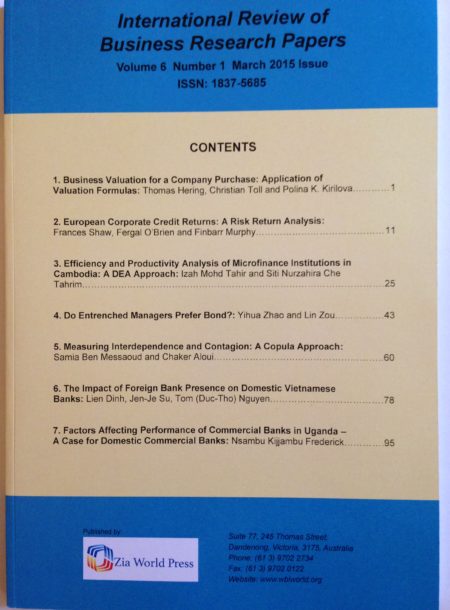International Review of Business Research Papers
Vol. 14. No. 1., March 2018, Pages: 180 – 204
Credit Risk Management in the Banking Sector during Low-Growth Periods: Evidence from Lebanon
Rima Bizri and Mira Baassiri
Credit risk management is considered one of the more difficult activities in the banking industry especially during periods of low growth. It is during those periods that default risk rises, and a large proportion of the banking industry’s loan portfolio becomes at risk of default. Consequently, it is the aim of this paper to investigate how the banking systems in the Middle East manage their asset quality during periods of low growth. This study examines a sample of Lebanese banks during a 6-year period of low economic growth to see how the Lebanese banking industry, an advanced and profitable economic sector, addresses asset quality issues. A variety of statistical tests were performed such as t-tests and regression analysis with SPSS. In periods of low growth, increasing the proportions of investments in portfolio securities (rather than increase their loan portfolio) is positively related to better asset quality and lower credit risk. Moreover, a higher percentage of non-interest-income is positively related to higher profitability as it provides income diversification while reducing market risk. This study was able to fill a gap in the literature by offering a deep understanding of how Lebanese banks manage the quality of their assets during unfavorable economic conditions.
DOI :
https://doi.org/10.21102/irbrp.2018.03.141.11

